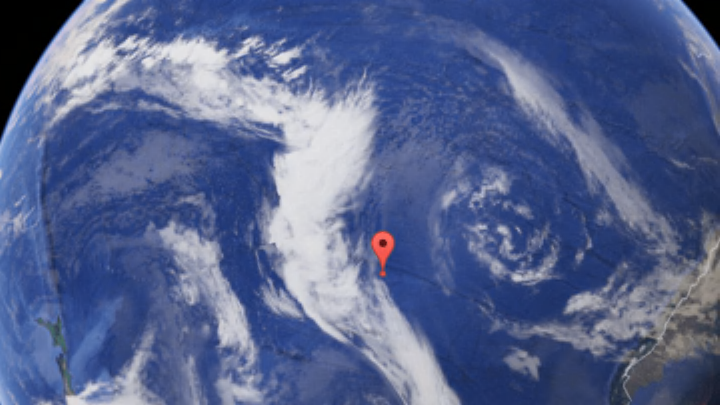If you’ve ever traveled by ship, sailboat, or even surfboard, you know you don’t have to get too far out from shore to feel completely isolated. If that’s not good enough for you, you might try checking out Point Nemo, which is literally located in the middle of the ocean. This spot in the Pacific, also known as the Oceanic Pole of Inaccessibility, is farther from land than anywhere else on Earth.
How far? About 1450 nautical miles. The point lies at the exact center of a triangle formed by three tracts of dry land: Ducie Island, in the Pitcairns; Moto Nui, in the Easter Islands; and Antarctica’s Maher Island. The designation of the spot itself is relatively new; we didn’t have the mapping and geotargeting technology to locate it until 1992.
The point was named after Jules Verne’s submarine Captain Nemo—a Latin name that also happens to mean “no one.” Which is exactly what you’ll find there. On the surface, anyway.
But were you to board Captain Nemo’s (fictional) Nautilus and sink to the sea floor, you’d find a different (fictional) landscape altogether—a “nightmare corpse-city,” in fact. For the Oceanic Pole of Inaccessibility is also the home of H.P. Lovecraft’s eldritch god Cthulhu.

Image Credit: Nojhan via Wikimedia Commons // CC BY-SA 3.0
Lovecraft placed the dread city of R’lyeh on the map long before Point Nemo was identified, yet he managed to throw his cartographic dart spookily close to the future landmark. On this map, you can see Lovecraft’s point at 47°9'S 126°43'W. His publisher August Derleth had his own ideas, and located the green, slimy vaults of R’lyeh at 49°51'S 128°34'W. Lovecraft’s approximation was closer, but there’s no reason to quibble. There are monsters and terrible deities enough to go around.
And sure, maybe there aren’t really Lovecraftian beasts smearing their prey across the sand. But there’s something down there. Five years after Point Nemo was identified, oceanographers in the region recorded one of the most puzzling sounds in the history of natural science: the Bloop. This ultra-low-frequency sound was too big and low to be made by the biggest known creature in the ocean, the blue whale. Lovecraft fans were gleeful: the Old Gods were stirring. Unfortunately for them (and fortunately for the rest of us), the Bloop was eventually identified as the sound of a continent coming apart, as an ice shelf cracked and split from Antarctica.
